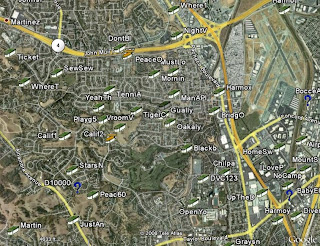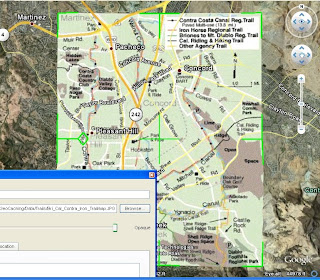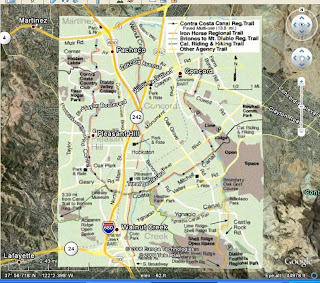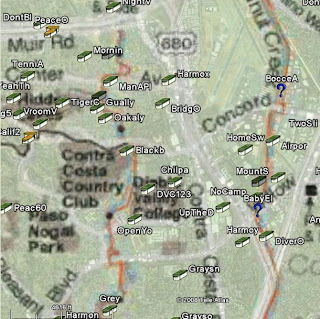For Beginners Only
One of the best write-ups I've seen for people thinking about taking up this great hobby of ours, from our friends at Geocaching Online. And here's an abridged version from an earlier post of mine.
You Can Get There From Here
New on Geocaching.com, driving directions from your home location to the cache site. Just go to any cache page and click on the new “Driving Directions” link:
A Google Maps map window will open with turn by turn directions from your home coordinates to the cache site (or as close to the site as you can drive to). Pretty nifty.
Geocaching with an iPhone
If you are lucky enough to own one of the new iPhone 3G's , this article describes how to use it for geocaching. And the first geocaching application for the iPhone, Geopher Lite, is available to download for $3.99. If you're just interested in learning more about how the iPhone and the iPodTouch use WiFi signals to identify your location, here's a nice explanation. And here's how Steve Jobs explains it.
I think there's a cache near here...
Google Maps is adding a "Walking Directions" feature. This could come in handy for tackling those urban caches in unfamiliar territory. Now, if Google would just create "Biking Directions"...
Ever wanted to create your own Google Maps map using their API, but didn't want to bother learning the API codes or javascript? Well then, let Click2Map do it for you. Just provide the location information of the features you want to map, and this site will create a map for you to post on your web site - no programming required.
BikeRouteToaster is a course creation application primarily aimed at Garmin Edge/Forerunner owners although other users without a GPS may also find it useful for planning rides. Courses are created using Google maps and then downloaded from the server.
Happy Caching!








